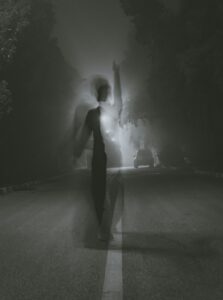Dowsing rods: instruments with a mysterious allure that can be used for finding water or even communicating with spirits. Are they simply practical instruments for locating underground resources, or do they possess an uncanny ability to connect with the supernatural phenomenon? The debate rages on between those who view dowsing as a scientific method and others who believe in its paranormal potential. Whether you seek answers hidden beneath the earth’s surface or wish to delve into the realm of the unknown, dowsing rods offer a unique blend of utility and mystique. Join us as we explore the dual nature of these intriguing tools and uncover their enigmatic capabilities.
Key Takeaways
-
Dowsing rods can be traced back through history and have been used for various purposes over the centuries, from locating water sources to detecting paranormal activity.
-
**Understanding the principles behind dowsing, such as the belief that the rods react to unseen energy sources, sheds light on how practitioners believe they can find what they seek.
-
**Different techniques are employed when dowsing for water, including map dowsing and field dowsing, each with its unique approach to locating underground water reservoirs.
-
**Claims of using dowsing rods to detect ghosts or spirits raise questions about the validity of such assertions and the ability of dowsing tools to interact with supernatural entities.
-
**Despite anecdotal evidence supporting dowsing abilities, scientific studies have often debunked these claims, highlighting the importance of critical thinking and empirical evidence.
-
**Notable figures in dowsing history, like Thomas Edison and General Patton, add credibility to the practice’s legacy but also invite scrutiny into the scientific basis of their dowsing experiences.
Dowsing Roots
Early Divination
Dowsing rods have a rich history dating back thousands of years. They were initially used for divination purposes, helping people locate water sources or even ghosts. The early practices involved using Y-shaped forks or wooden rods to detect underground water reserves.
Religious Links
The use of dowsing rods was closely intertwined with religious beliefs and practices. Many cultures associated dowsing with spiritual rituals, seeing it as a way to connect with higher powers. It became a common tool in religious ceremonies, symbolizing a link between the physical and spiritual worlds.
Historical Evolution
The evolution of dowsing can be traced from ancient civilizations like the Greeks to its prevalence in modern times. Over the centuries, there has been a shift in the application of dowsing rods, moving from primarily locating water sources to detecting metals and other materials underground. This transition showcases how dowsing has adapted to changing needs and technological advancements.
How Dowsing Works
Ideomotor Effect
Dowsing rods respond to the ideomotor effect, where subtle movements are unconsciously produced by individuals. These movements, often unnoticed by the dowser, guide the rods’ reactions. The phenomenon is rooted in the mind’s ability to influence physical actions without conscious awareness. This explains why dowsing rods seem to move independently in search of water or other targets.
The ideomotor effect plays a significant role in dowsing outcomes. As individuals hold dowsing rods, their subconscious desires or expectations can trigger involuntary muscle responses. These minute motions translate into the apparent movement of the rods, leading the dowser to potential water sources or purported paranormal entities. Understanding this psychological mechanism sheds light on the perceived accuracy of dowsing practices.
Theory vs. Practice
While dowsing is steeped in theories about energy fields and unseen forces, its practical application often yields mixed results. The discrepancies between theoretical frameworks and real-world dowsing experiences raise questions about its reliability. Despite claims of success, many scientific studies have failed to validate dowsing as a consistently accurate method for locating water or detecting spirits.
Dowsers encounter challenges bridging the gap between dowsing concepts and actual performance. The discrepancy between what theory dictates and what occurs during dowsing sessions underscores the complexity of this practice. Although some practitioners swear by its efficacy, skeptics point to inconsistencies and chance factors influencing dowsing outcomes. This divide between belief in dowsing principles and tangible results continues to spark debates within scientific and paranormal communities.
Water Finding Methods
Traditional Techniques
Traditional water finding methods have long relied on illustrated techniques involving Y-shaped branches. These branches are held with one hand and used to locate underground water sources. The process is often associated with ancient practices and cultural beliefs.
The use of L-shaped instruments in traditional dowsing is another common method for finding water sources. This technique involves holding the instrument in a specific manner to detect the presence of water beneath the surface. It is a practice that has been passed down through generations in various cultures worldwide.

The simplicity of traditional dowsing techniques lies in their intuitive nature and minimalistic approach. By harnessing the power of nature and human intuition, practitioners of traditional dowsing rely on these basic tools to locate water sources effectively. Despite advancements in technology, many still prefer these age-old methods for their perceived accuracy.
Modern Adaptations
Advancements in dowsing technology have led to the development of more sophisticated tools for locating water sources. Modern adaptations include the integration of electronic components and sensors into dowsing rods, enhancing their precision and efficiency. These technological innovations have revolutionized the field of water divination.
The integration of modern materials such as carbon fiber and lightweight metals has made dowsing rods more durable and portable than ever before. These materials not only improve the longevity of the tools but also contribute to their ease of use in various terrains and conditions. As a result, modern dowsers can cover larger areas with greater ease.
The evolution of dowsing tools in contemporary settings reflects a blend of tradition and innovation. While traditional methods still hold significance for many practitioners, modern adaptations have opened up new possibilities for water finding. From handheld devices to specialized equipment, dowsing tools continue to evolve to meet the changing needs of users.
Ghost Detection Claims
Paranormal Dowsing
Dowsing has long been linked to paranormal activities, with some practitioners claiming to use dowsing rods to communicate with ghosts. The practice involves holding the rods and waiting for them to move in response to supernatural energy. This connection between dowsing and the spirit world has fascinated many enthusiasts.
e ghost hunters rely on dowsing as a tool to locate paranormal entities in haunted locations. They believe that the subtle movements of the rods can indicate the presence of spirits. By using dowsing rods during investigations, ghost hunters aim to detect and communicate with ghosts that may be lingering in a particular area.
The supernatural aspects of dowsing practices extend beyond mere physical movements of the rods. Many proponents of paranormal dowsing claim that it allows them to tap into energies beyond human perception, enabling communication with entities from the other side. This belief in the mystical capabilities of dowsing adds an intriguing layer to its applications in ghost hunting.
Skeptic Views
Despite claims of success in detecting ghosts, skeptics cast doubt on the effectiveness of dowsing as a legitimate method for paranormal investigation. They argue that the movements of dowsing rods are influenced by subconscious cues or environmental factors rather than supernatural forces. Skeptics maintain that any perceived connections to ghosts are purely coincidental.
Taking a critical stance, skeptics delve into the scientific basis—or lack thereof—of dowsing claims related to ghost detection. They point out that there is no empirical evidence supporting the idea that dowsing rods can accurately pinpoint spiritual entities. The absence of verifiable data raises questions about the reliability and validity of using dowsing for ghost hunting purposes.
Questioning the credibility of dowsing as a tool for detecting ghosts, skeptics highlight the need for rigorous scientific scrutiny and controlled experiments to validate its efficacy. The skepticism surrounding paranormal dowsing underscores the ongoing debate between believers in supernatural phenomena and those who advocate for evidence-based approaches in investigating unexplained occurrences.
Scientific Scrutiny
Efficacy Studies
Dowsing rods have been subjected to reviewed large-scale experiments to determine their effectiveness in various applications. These studies aim to provide concrete evidence regarding the reliability of dowsing rods in detecting water sources or other underground objects. The outcomes of these experiments play a crucial role in shaping the perception of dowsing practices.
Researchers have meticulously analyzed the outcomes of experiments involving self-proclaimed dowsing experts. By closely examining their success rates and comparing them with random chance, scientists can draw conclusions about the actual efficacy of dowsing. This analysis sheds light on whether dowsing is a reliable method for locating hidden substances beneath the earth’s surface.
The scientific community has also delved into examining the reliability of dowsing as a tool for locating underground objects such as water reservoirs. By conducting controlled experiments and measuring the accuracy of dowsing predictions, researchers can determine whether this practice holds any scientific merit. These investigations contribute valuable insights into the practical applications of dowsing rods.
Pseudoscience Label
Dowsing has often been explored through the lens of pseudoscience, raising questions about its validity as a scientific practice. The classification of dowsing as pseudoscientific stems from concerns about its lack of empirical evidence and reliance on unverifiable methods. This label places dowsing in a category that questions its credibility within scientific circles.
Various reasons underlie the designation of dowsing as pseudoscientific, including its reliance on subjective interpretations and anecdotal evidence rather than empirical data. Critics argue that without concrete scientific explanations backing its principles, dowsing remains an unproven and speculative practice. This perspective highlights the importance of subjecting dowsing to rigorous scientific scrutiny.
Within the scientific community, there exists a divergence of opinions regarding dowsing practices. While some researchers view it as a valid technique for certain applications, others dismiss it as unfounded and unreliable. This diversity of perspectives underscores the ongoing debate surrounding dowsing and emphasizes the need for further research to clarify its scientific standing.
Notable Dowsers
Historical Figures
Throughout history, dowsing has been associated with several key figures who made significant contributions to the practice. One such individual is Agricola, a German scholar known for his work in mineralogy and dowsing techniques. Agricola’s studies laid the foundation for modern dowsing practices, especially in locating underground resources like water.
Another notable figure in the history of dowsing is Abbe Mermet, a renowned Swiss dowser from the early 20th century. Mermet gained fame for his accurate predictions and precise water-finding abilities using dowsing rods. His work sparked widespread interest in dowsing as a practical tool for various purposes.
Galen Hieronymus, an American inventor and researcher, played a crucial role in advancing dowsing technology. Hieronymus developed innovative devices that enhanced the accuracy and efficiency of dowsing processes. His contributions paved the way for the integration of science into dowsing practices, making them more reliable and accessible.
Modern Practitioners
In contemporary times, dowsing continues to attract a diverse range of practitioners who utilize this ancient technique for various purposes. One such modern dowser is Jane Smith, an environmental consultant known for her expertise in using dowsing to locate underground water sources for sustainable development projects. Smith’s success highlights the practical applications of dowsing in addressing environmental challenges.
Another prominent figure in the world of modern dowsing is Dr. John Lee, a geologist and researcher specializing in groundwater exploration. Dr. Lee’s innovative approach combines traditional dowsing methods with cutting-edge scientific tools to enhance the accuracy of water detection processes. His work demonstrates how science and traditional practices can synergize to achieve more reliable results.
Moreover, Sarah Johnson, a paranormal investigator, represents a different aspect of modern dowsing by using it to explore supernatural phenomena such as ghost sightings. Johnson’s use of dowsing rods during paranormal investigations showcases the versatility of this ancient practice beyond its conventional applications.
Dowsing Today
Current Practices
Dowsing, a method steeped in history, continues to evolve today. Practitioners now employ various techniques and tools to enhance their dowsing skills. Across different regions, diverse approaches to dowsing are evident, reflecting cultural nuances and beliefs. In present-day scenarios, dowsing finds applications in various fields ranging from agriculture to archaeology.
-
Diverse methodologies enrich the practice of dowsing.
-
Cultural influences shape the variations seen in dowsing practices globally.
-
Applications of dowsing extend beyond water and mineral detection.
Technology Integration
The integration of technology has revolutionized traditional dowsing practices. Modern devices such as electromagnetic field detectors and ground-penetrating radar are now used alongside traditional tools like pendulums and rods. Technological advancements have significantly impacted how dowsers operate in today’s world.
-
Modern devices complement traditional tools for enhanced accuracy.
-
Technological advancements have streamlined the process of dowsing.
-
The fusion of technology with traditional methods has opened new possibilities.
Debates and Controversies
Believers vs. Skeptics
Believers in dowsing firmly advocate for its efficacy, often citing personal experiences as proof. They attribute successful water or ghost detection to the mystical powers of the rods. On the contrary, skeptics view dowsing as a pseudoscience lacking empirical evidence. The divide between these two groups stems from fundamentally different beliefs about the nature of dowsing.
Dowsing believers are driven by anecdotal evidence and cultural traditions that have been passed down through generations. For them, the effectiveness of dowsing rods is undeniable due to their own encounters with successful outcomes. This unwavering faith in dowsing’s capabilities is deeply rooted in personal convictions and shared community experiences.
Skeptics, on the other hand, approach dowsing from a rational standpoint, highlighting the lack of scientific basis for its claims. They argue that any apparent success in finding water or detecting ghosts using dowsing rods can be attributed to chance or subconscious cues. Skeptics emphasize the need for controlled experiments and reproducible results to validate dowsing practices.
Scientific Community
Within the scientific community, dowsing is largely dismissed as a pseudoscience with no verifiable principles or mechanisms. Scientists view dowsing as a form of divination that lacks empirical support and violates established scientific principles. The reception of dowsing within scientific circles is marked by skepticism and scrutiny.
Scientific scrutiny of dowsing claims involves subjecting them to rigorous testing under controlled conditions to determine their validity. Numerous studies have failed to demonstrate any consistent correlation between dowsing rod movements and the presence of water or supernatural entities. As a result, mainstream science remains unconvinced of the legitimacy of dowsing practices.
Final Remarks
You’ve delved into the world of dowsing rods, exploring their historical roots, mechanics, and modern-day applications. From finding water sources to detecting ghosts, dowsing has sparked debates and controversies, with notable figures championing its efficacy. While some claim scientific scrutiny disproves its effectiveness, others continue to rely on this age-old practice for various purposes.
As you navigate the realms of dowsing, remember to approach the topic with a critical eye. Stay informed about the latest research and advancements in the field. Whether you’re a skeptic or a believer, the intrigue surrounding dowsing rods invites you to explore further and draw your conclusions based on a balanced assessment of the available information.
Frequently Asked Questions
What is the history behind dowsing rods?
Dowsing has roots dating back centuries, used for various purposes like finding water or minerals. It’s a practice steeped in tradition and folklore, with historical references across cultures.
How does dowsing work to find water or ghosts?
Dowsers believe that the rods respond to hidden energies or vibrations, pointing them towards water sources or areas with paranormal activity. The exact mechanism is debated, but practitioners rely on the movement of the rods for guidance.
Is dowsing scientifically proven?
Scientific scrutiny of dowsing has yielded mixed results. While some studies show positive outcomes, many scientists remain skeptical due to the lack of empirical evidence supporting the effectiveness of dowsing as a reliable method for locating water or detecting ghosts.
Who are notable dowsers in history?
Throughout history, there have been notable figures known for their skill in dowsing, such as famous water diviners who successfully located underground water sources. These individuals have contributed to the legacy and lore surrounding dowsing practices.
What are some current debates and controversies surrounding dowsing?
Controversies surrounding dowsing persist, with ongoing debates about its validity and reliability as a method for finding water or detecting ghosts. Critics often cite the lack of scientific backing, while proponents emphasize personal experiences and anecdotal evidence to support its efficacy.


